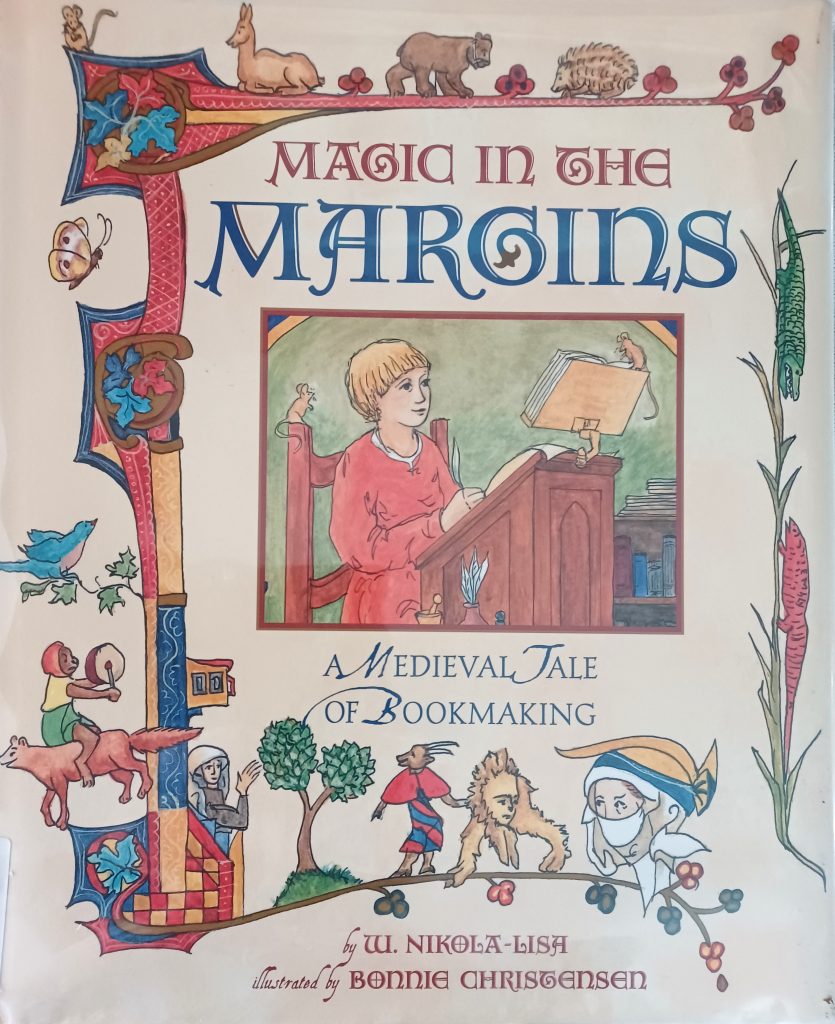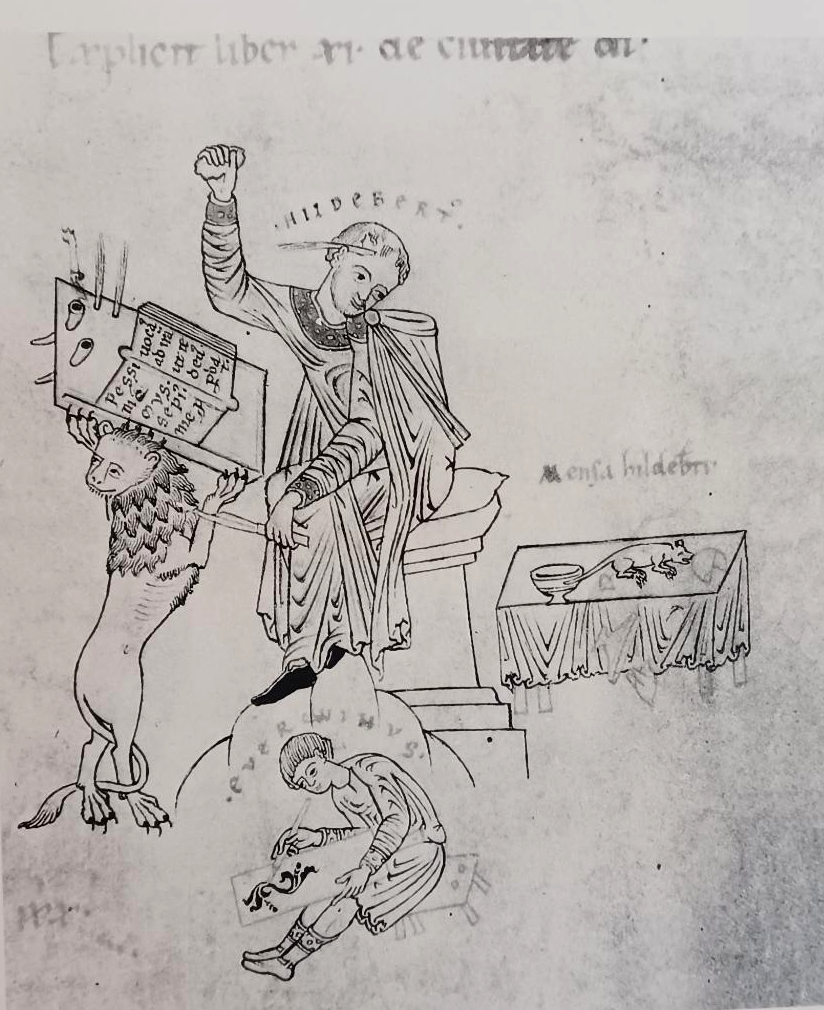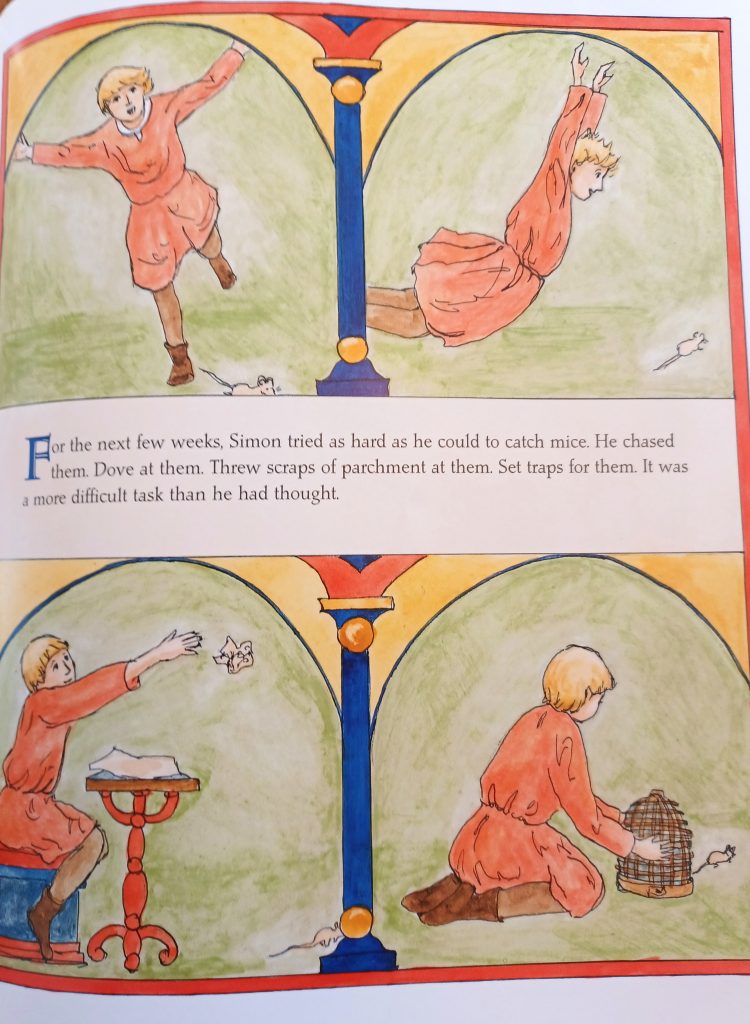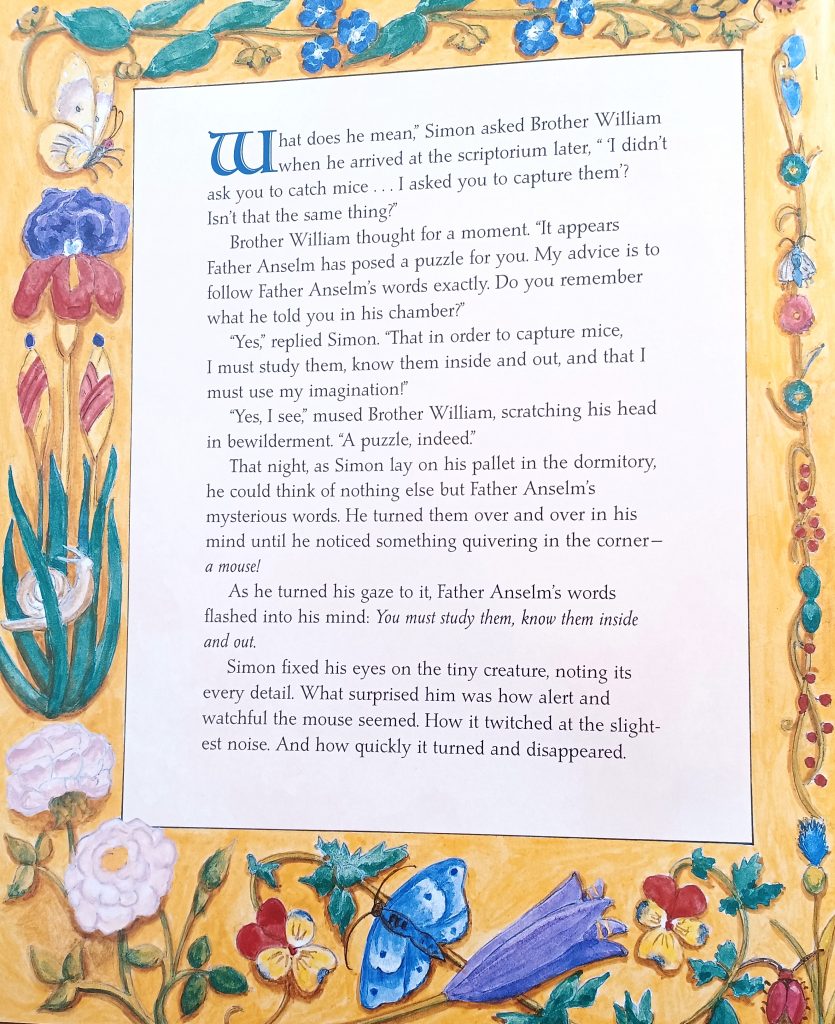
Magic In the Margins is the sixth book in our Medieval Manuscripts Children’s Book Resources list.
The author information on the dust jacket says, “Mr. Nikola-Lisa’s interest in medieval bookmaking began many years ago as a second grade teacher, when he ended each year with a unit on the Middle Ages.”
In his preface, Nikola-Lisa says his inspiration for this book came from an illustration in another book; Bibles and Bestiaries: A Guide to Illuminated Manuscripts, by Elizabeth B Wilson. The illustration shows a scribe watching a mouse stealing his cheese, but also includes a picture of the scribe’s young apprentice. Nikola-Lisa began to wonder about the apprentice’s life.
“Like many stories, this one welled up from the questions I posed.”

Nikola-Lisa names the apprentice Simon, and makes him a poor orphan who is being brought up in a monastery. Simon works with Brother William, learning all the skills he will need to become a scribe himself. He’s impatient to begin drawing his own pictures in one of Father Anselm’s manuscripts, so Brother William agrees to show him Simon’s work.
Father Anselm tells Simon he has a good eye, but that a real artist must have vision as well as skill. In order to demonstrate that he has imagination, Simon should capture mice. Of course, Simon thinks he is supposed to try to catch mice.

He fails to catch any, but as he thinks more about what Father Anselm is asking him to do, he sees a mouse in the corner of his room. It finally occurs to him what Father Anselm meant by “capturing” mice, and he begins to draw mice in all sorts of positions.
Father Anselm thinks the drawings are excellent, but Simon still hasn’t quite grasped what he meant by using his imagination. By studying the drawings in the margins of the monastery’s manuscripts, Simon finally understands. He draws flying mice, a mouse fighting a dragon, a mouse drawing–he fills an entire parchment with mice.

Readers learn the fact that Simon has to know how to make parchment, cure quill pens, grind pigments for paint, and write the alphabet. We learn the meaning of “bestiary,” “herbal,” and “psalter.” There are some lovely and interesting illustrations, but I don’t find it as illustrative of the art and craft of medieval book-making as some of the other resources on our list.

The emphasis on Simon’s imagination is probably not representative of the focus of the work that went on in monasteries. I suspect that the perfecting of skills was much more important than imagination. The author does acknowledge, in his Afterword, that there were very definite concepts and symbols required for the work. But there’s no harm in enjoying the story Nikola-Lisa’s imagination conjured.
If you would like to learn more about this book, check it out at Biblioguides here. If you are interested in purchasing this book, you can find it at Amazon.